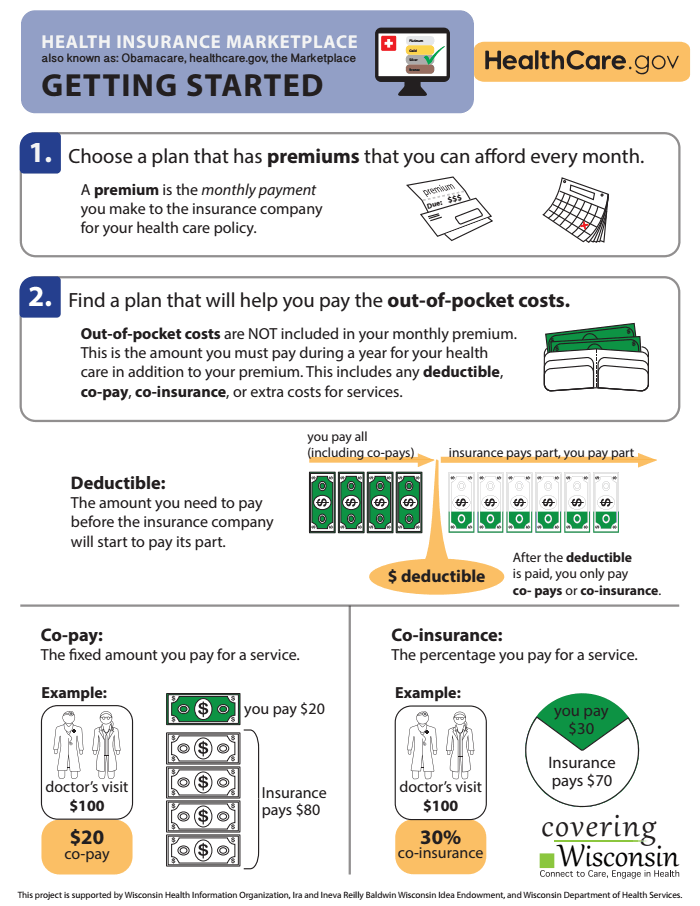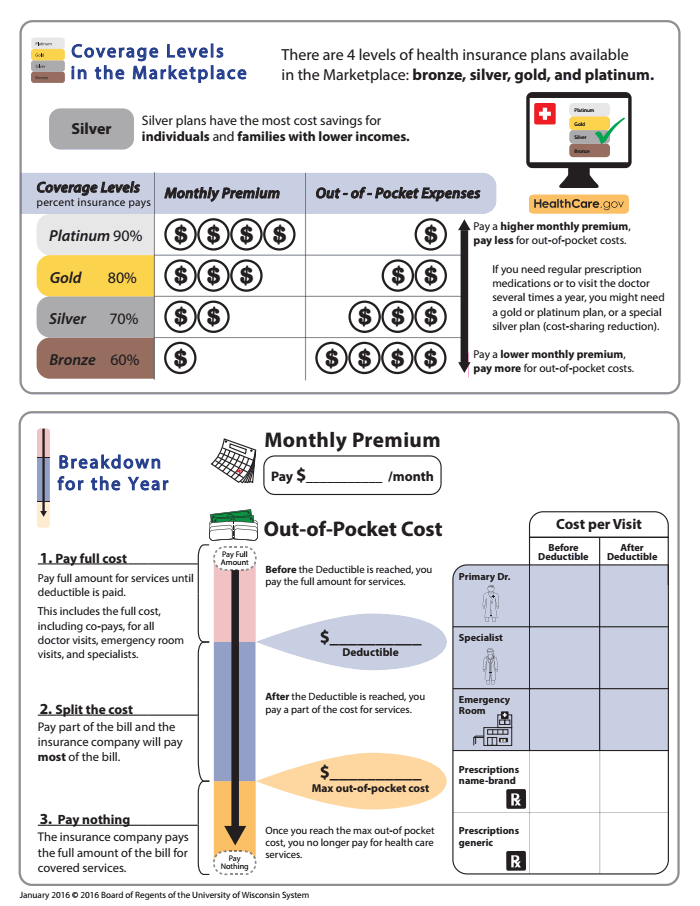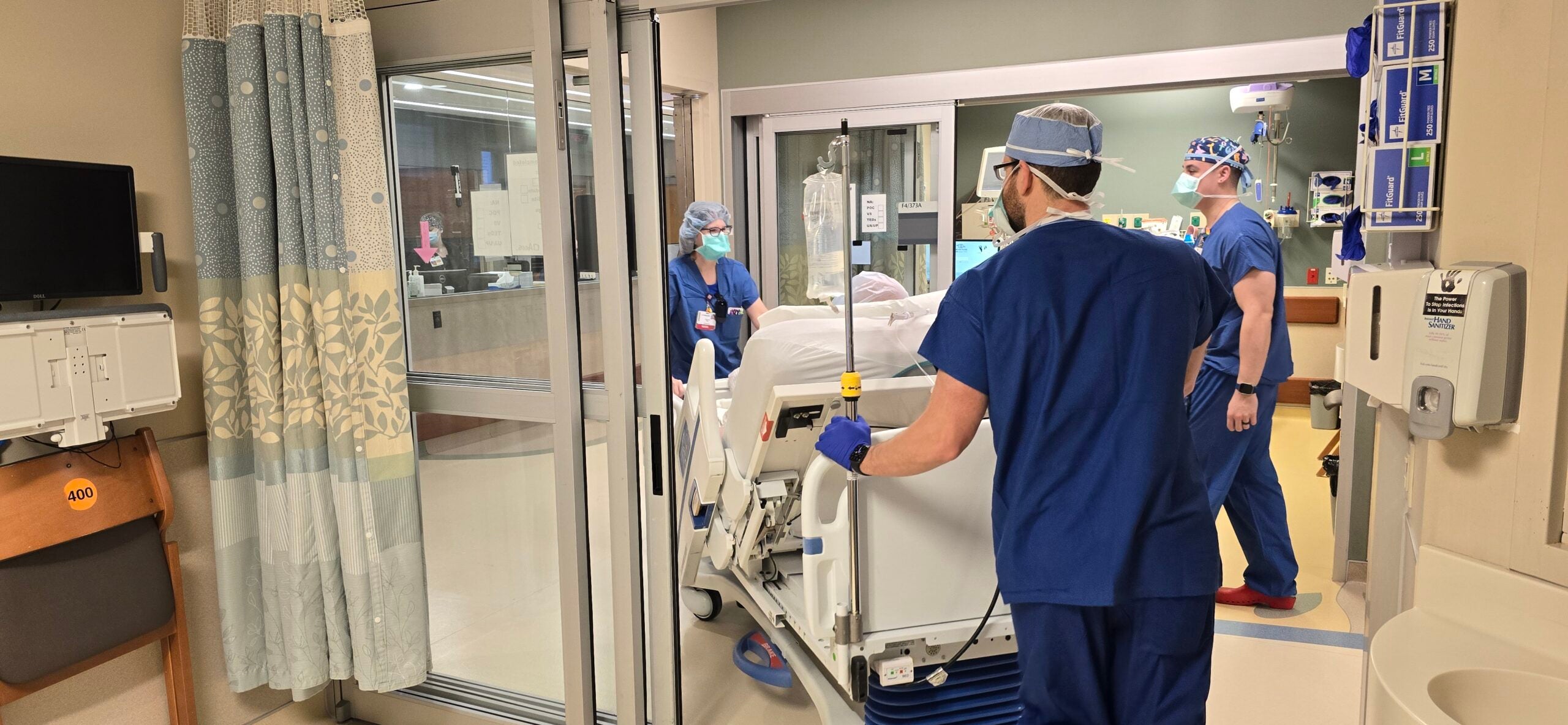Making financial decisions about health insurance can be difficult for people who are unable to understand what’s included in their coverage plans. Struggling to understand the details of an insurance plan is a common problem for many Americans, particularly for people new to having coverage. While the health insurance expansions established through the Affordable Care Act aim to improve access to care, reduce costs and lead to healthier outcomes, achieving these goals depends on consumers knowing how to use their coverage.
An August 2015 survey conducted by the Kaiser Family Foundation illustrates how pervasive this lack of public comprehension is. Seventy-four percent of the organizations that assisted the public in enrolling in health insurance needed to explain basic health insurance terminology to nearly all of the consumers they assisted to enroll in coverage.

Stephanie Severs
News with a little more humanity
WPR’s “Wisconsin Today” newsletter keeps you connected to the state you love without feeling overwhelmed. No paywall. No agenda. No corporate filter.
One complication is that most resources explaining how health plans work are provided in written handbooks, using language that requires high levels of literacy. Understanding these guides can be a challenge considering that 39 percent of Wisconsin adults were at basic or below basic health literacy levels in 2003. Health insurance literacy requires a variety of skills in addition to numeracy, comprehension, reading and writing. It is defined as “the capacity to find and evaluate information about health plans, select the best plan given financial health circumstances, and use the plan once enrolled.”
As a result of the challenges involved in understanding and using health insurance, many Americans learn how to use their plans by trial and error, often racking up large bills because they don’t understand how the health care system works. Premiums or other bills may not be paid on time, preventive check-ups are not scheduled, and trips to the emergency room are often made when a visit to urgent care or a call to a primary care provider would have sufficed — and been less costly.
As such, knowing where and how to seek appropriate care is a key factor to keeping costs manageable. If consumers need timely care, but do not have an emergency, they should avoid using the ER. Without clearly understanding their coverage plan, consumers may not recognize that ERs are a significantly more expensive route for health care. They will be left to foot a larger portion of a more expensive bill than had they sought help through urgent care, a same-day appointment with their own doctor, or even by calling a 24-hour nurse hotline provided by their insurance carrier.
Let’s walk through each of the alternatives to the ER that may be less well-known to those learning to navigate their coverage. Patients can call their doctor’s office at any time to receive medical advice. Many doctor offices forward queries to call service centers that will take messages and have a health care professional return the call, even after standard business hours. This person may offer advice on how to treat a condition, call in a prescription to a pharmacy or instruct the patient to go the emergency room.
Another option for patients is going to a walk-in urgent care clinic covered by their plan. Often offering extended hours, these clinics are significantly cheaper than going to an ER. Consumers enrolling with a new insurance company should be sure to find out before an emergency which urgent care clinics their plans cover.
Two additional aspects of health insurance can have financial repercussions when consumers don’t understand how they work: networks and which services are free (meaning they are included in their health plans at no additional charge).
For consumers who previously did not have an insurance plan that limited their choice of doctors, the concept of staying within a provider network may be unfamiliar. It’s best for patients to call the insurance company prior to an appointment with a new doctor or specialist to make sure he or she is in its network. If that doctor is not in the network, the company should provide names and phone numbers of those who are, and the patient should cancel the appointment to avoid paying for it.
The Affordable Care Act established that all health insurance plans now come with free preventive services that include an annual checkup and tests that depend on age and gender. For example, children can get hearing and vision tests at various ages, women can get an additional “Well Woman” checkup or mammograms after their 40th birthday, and all adults can get blood pressure screenings. Patients are not charged additional fees for these services. All insurance plans also now include services such as drug and alcohol counseling, obesity testing and counseling, help to quit smoking, breastfeeding support and birth control (excepting plans sponsored by exempt employers affiliated with religious organizations). Patients should ask their insurance companies which tests are included in their plans and which are right for them. For additional information, healthcare.gov provides details about preventative health services.
Covering Wisconsin is a federally designated Navigator entity for the Affordable Care Act. Affiliated with UW-Extension, the group collaborates with the Wisconsin Department of Health Services and other agencies to produce and provide training and support to the state’s 11 regional enrollment networks. Through this partnership with Covering Wisconsin, Extension educators engage consumers in discussions on health coverage options and how they work, and provide materials in plain language, with representative images and step-by-step instructions to pick the right plan and get the most appropriate care.
Covering Wisconsin provides a series of consumer fact sheets, including ones addressing basic care, the BadgerCare program and the federal health insurance marketplace. Here is one fact sheet about selecting a plan in the federal marketplace.


As more consumers who are new to health insurance get enrolled each year, they will continue to face challenges in understanding how their plans work. Covering Wisconsin will continue to build on its relationships with federal, state and local entities to help consumers gain the skills they need to make sound choices about accessing and using their health insurance.
Stephanie Severs is a health insurance literacy outreach specialist for Covering Wisconsin.
This report was produced in a partnership between Wisconsin Public Radio, PBS Wisconsin and the University of Wisconsin Cooperative Extension. @ Copyright 2025, Board of Regents of the University of Wisconsin System and Wisconsin Educational Communications Board.






